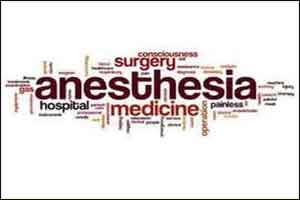- Home
- Editorial
- News
- Practice Guidelines
- Anesthesiology Guidelines
- Cancer Guidelines
- Cardiac Sciences Guidelines
- Critical Care Guidelines
- Dentistry Guidelines
- Dermatology Guidelines
- Diabetes and Endo Guidelines
- Diagnostics Guidelines
- ENT Guidelines
- Featured Practice Guidelines
- Gastroenterology Guidelines
- Geriatrics Guidelines
- Medicine Guidelines
- Nephrology Guidelines
- Neurosciences Guidelines
- Obs and Gynae Guidelines
- Ophthalmology Guidelines
- Orthopaedics Guidelines
- Paediatrics Guidelines
- Psychiatry Guidelines
- Pulmonology Guidelines
- Radiology Guidelines
- Surgery Guidelines
- Urology Guidelines
Statement on Anesthetic Care During Interventional Pain Procedures for Adults

American Society of Anesthesiologists has issued the Statement on Anesthetic Care During Interventional Pain Procedures for Adults.The committee of Origin, Pain Medicine Formulated the statement which was approved by the ASA House of Delegates on October 22, 2005, and last amended on October 26, 2016.
Following are the major recommendations:
The use of moderate (conscious) sedation and/or anesthesia during the performance of pain procedures must be balanced with the potential risk of harm from doing pain procedures in sedated patients. The Committee recognizes the provision of sedation or anesthesia as a separate and distinct service from the pain procedure and thus requiring specific training and credentialing. For more information, see the ASA Statement on Granting Privileges for Administration of Moderate Sedation to Practitioners Who Are Not Anesthesia Professionals. The Committee also notes that when moderate (conscious) sedation is provided during the performance of a pain procedure, it should allow the patient to be responsive during critical portions of the procedure, e.g., to report any procedure-related change in pain intensity, function and/or paresthesia.
Many patients can undergo interventional pain procedures without the need for supplemental sedation in addition to local anesthesia. For most patients who require supplemental sedation, the physician performing the interventional pain procedure(s) can provide moderate (conscious) sedation as part of the procedure. For a limited number of patients a second provider may be required to manage moderate or deep sedation or, in selected cases other anesthesia services. Examples of procedures that typically do not require sedation include but are not limited to epidural steroid injections, epidural blood patch, trigger point injections, injections into the shoulder, hip, knee, facet, and sacroiliac joints, and occipital nerve blocks.
Significant anxiety may be an indication for moderate (conscious) sedation or anesthesia services. In addition, procedures that require the patient to remain motionless for a prolonged period of time and/or remain in a painful position may require sedation or anesthesia services. Examples of such procedures include but are not limited to sympathetic blocks (celiac plexus, paravertebral and hypogastric), chemical or radiofrequency ablation, percutaneous discectomy, trial spinal cord stimulator lead placement, permanent spinal cord stimulator generator and lead implantation, and intrathecal pump implantation. Major nerve/plexus blocks are performed less often in the chronic pain clinic, but the Committee believes that these blocks may more commonly require moderate (conscious) sedation or anesthesia services (e.g., brachial plexus block, sciatic nerve block, and continuous catheter techniques).
The Committee recognizes that pediatric patients may require sedation or anesthesia services for pain procedures because of age-related differences in the approach to this patient population.
Anesthesia services are not the same as moderate (conscious) sedation. For more information, see the ASA Statements “Distinguishing Monitored Anesthesia Care (“MAC”) from Moderate Sedation/Analgesia (Conscious Sedation)” and “Continuum of Depth of Sedation; Definition of General Anesthesia and Levels of Sedation/Analgesia.”

Disclaimer: This site is primarily intended for healthcare professionals. Any content/information on this website does not replace the advice of medical and/or health professionals and should not be construed as medical/diagnostic advice/endorsement or prescription. Use of this site is subject to our terms of use, privacy policy, advertisement policy. © 2020 Minerva Medical Treatment Pvt Ltd